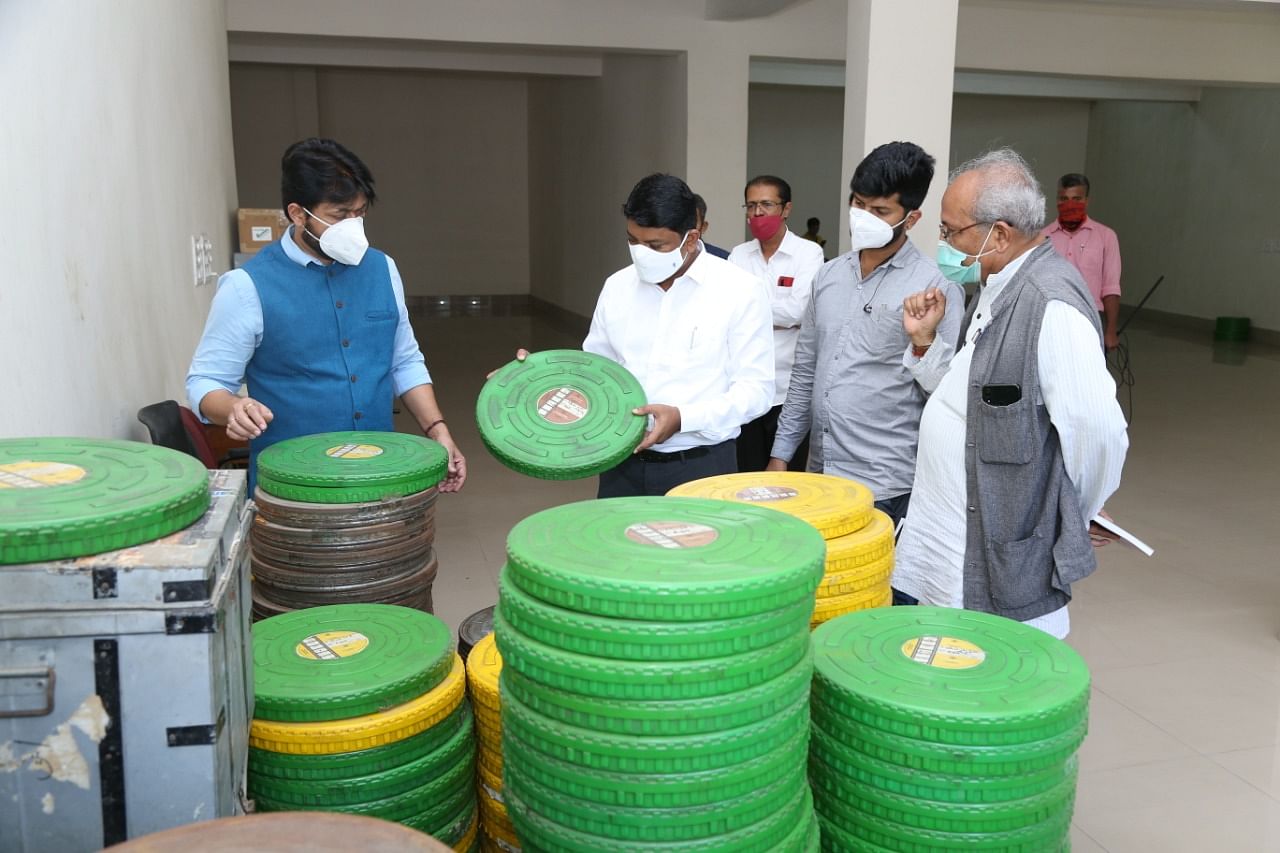
Work on archiving 84 years of Kannada cinema has begun at the Karnataka Chalanachitra Academy.
An archive for Kannada cinema had remained a dream for years, and it has begun to take concrete shape only this year, says Suneel Puranik, chairman of the academy.
The academy has already contacted directors, exhibitors and production houses to source archival material.
Among other material, the archives will store posters, songs and beta copies of films.
“Kannada cinema has a rich legacy. A well-stocked archive will help academics and researchers understand what went into the making of the industry,” Suneel told Metrolife.
He has contacted institutions and individuals to locate negatives of old films.
The academy, with its office in Nandini Layout, hopes to digitally restore classic films.
Studio and museum
Plans include the setting up of a small studio and museum. “The studio can be used by research scholars and students to watch films and make notes. We are also in the process of procuring negatives from the Censor Board and the state awards selection committee. We already have 2,000 films in our academy,” says Suneel.
Films in all languages of Karnataka, including Beary, Kodava, Tulu, Konkani and Banjara, will find a place in the archive. “The negatives will be preserved and used only for academics,” says Suneel.
The academy is approaching big production houses, for instance, houses like Vajreshwari Combines, Eshwari Productions, and KCN Combines, for help with the project. They will be contacting more such production houses.
Panel of experts
A committee comprising film critic N Vidyashankar, historian Suresh Moona, cinematographer Ashok Cashyap, designer Arun Sagar and film journalist Muralidhara Khajane has been constituted to offer guidance.
“They each have a specialisation and their knowledge will be used extensively for archival work,” says Suneel. The project is being executed in collaboration with the Bangalore Development Authority (BDA).
“The BDA had given Rs 1 crore to the academy in 2011 for its archives. We will use this fund,” he says.
Vidyashankar says an archive is necessary to keep a record of the art for posterity. “We have taken references from the National Film Archives of India (NFAI), Pune. We will be sourcing films from labs within the state and from outside as well. There will also be a physical structure to preserve the films after they are restored,” he says.
He says that the academy also plans to bring world cinema under one roof. “This won’t be a part of the archival work, but it will serve as a library for film buffs. The museum will be curated with information about costumes, scripts, photographs and all things connected with cinema,” adds Vidyashankar.
Cinema hall and museum
A 500-seat theatre and museum will come up on the premises of the academy in Nandini Layout. Ashok Cashyap, director and cinematographer, who will handle the restoration, says, “We have to carefully safeguard and recreate some frames and synchronise the audio and video in case of any damage. This process is expensive. Films from the ‘60s and ‘70s will be a challenge, and those from the ‘50s will be brittle. But, we are ready for it.” The academy will use modern technology to preserve Karnataka’s cinema history, he said. Well-known filmmakers such as Girish Kasaravalli and former chairman of the academy Nagathihalli Chandrashekar welcome the proposal.
“Procuring films and restoring them is a skilled job,” Kasaravalli told Metrolife.
Karnataka has competent technicians and the restored films will have to be stored at the right temperature in a good place, he says. “Some European countries have done it so well and I am sure we can too,” he observes. Nagathihalli Chandrashekhar says he had also dreamed, as chairman of the academy, of building a cinema hall to hold international film festivals, in addition to the archives.
“Neither took off because of a lack of will in the bureaucracy. This archive is long overdue and I am glad Suneel has taken it up,” he says.
A bit of history
The first film made in these parts was Mricchakatika (1931), starring stalwarts Kamaladevi Chattopadhyay and T P Kailasam. It was a silent film, adapted from a Sanskrit play by Sudraka.
Three years later, the first Kannada film with sound was made: Sati Sulochana. By 1940, the Kannada industry had taken root, and was producing a steady stream of films. But neither Mricchakatika nor Sati Sulochana was preserved, and efforts to trace them are still on. This is the void the new archive seeks to fill.